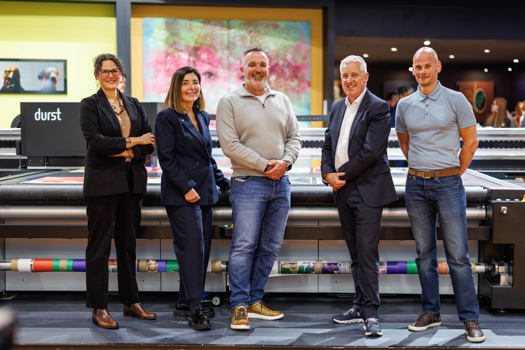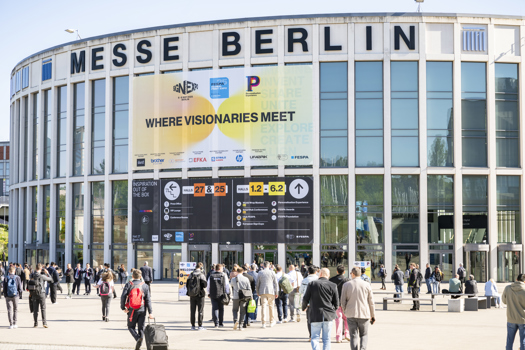At the end of last month, some 16 months after it entered bankruptcy protection, Kodak filed crucial proposals – a long time in the making – that are fundamental for its plans for emergence from Chapter 11.
The near-200pp disclosure statement outlines how this once-huge corporation plans to continue in a smaller, but profitable form with a business focused entirely on commercial imaging.
An illustration of just how radical the re-shaping of Kodak is can be found in the number of people it employs: a decade ago it was 63,900. That figure had dropped to just 13,100 by the end of 2012 due to the dramatic effects of sell-offs and restructuring.
Just before the proposals were made public, Kodak also announced that it had reached an agreement with the trustees of the Kodak UK pension scheme, which had been Kodak’s single-biggest creditor with a claim of $2.8bn (£1.8bn).
A solution had to be found to this huge liability, and it turned out to be an unusual one: the Kodak Pension Plan would forego its claim in return for taking over Kodak’s Personalised Imaging and Document Imaging businesses. It’s a deal that turns everything on its head, in that KPP will pay Kodak $650m to acquire the operations. The expectation being that future profits from the two businesses – which are currently profitable – will fund the ongoing pension commitments of the scheme’s 15,000 scheme members, albeit it at a reduced level.
Future Kodak
Assuming the pension deal and reorganisation proposals are eventually rubber-stamped, what will the future Kodak look like? The company describes its plan as "focusing on its most profitable business lines". Kodak will become a commercial imaging business, made up of two divisions and very much grounded in the printing industry.
The first division, Graphics, Entertainment & Commercial Film (GECF) comprises the bulk of Kodak’s pre-press operations, including litho plates, CTP systems, workflow, and digital front-ends. The division also incorporates Kodak’s remaining specialist film operations.
The second business unit, Digital Printing & Enterprise (DP&E), will include the high-speed inkjet business, the electrophotographic NexPress digital presses, flexo packaging systems, and functional printing – a new business area for Kodak, but one that it has high hopes for. Enterprise-level professional services, such as brand protection, also come under this umbrella.
While Kodak focuses on high-growth markets for its digital products, its mature film businesses, along with printing plates and anticipated growth in use of its Sonora process-free plate, will provide a backbone of ongoing cashflows.
In the search for growth Kodak is targeting a $720bn global market opportunity in a pie with three pieces: the commercial print and publishing market valued at $445m (based on 2011 figures); the packaging market valued at $247bn; and the emerging functional printing market of $28bn.
All three areas are forecast to rise in value by 2016 to $478bn, $325bn and $61bn respectively, according to the Kodak presentation.
The firm is also optimistic about its own future performance, and estimates that it will make EBITDA of $200m on sales of $2.6bn next year, with sales and profits rising year on year through to an expected $3.2bn turnover in 2017 with EBITDA of almost $500m by that time.
Even currently loss-making operations (the DP&E loss was $211m in 2012 and it will lose another $51m this year) are forecast to be back in the black by next year.
Central to its plans is to leverage the Stream high-speed inkjet system and the SquareSpot laser imaging technology that Kodak acquired when it bought Creo in 2005.
SquareSpot is already used in Kodak’s CTP systems for litho printing and in its Flexcel flexo imaging system. SquareSpot can image at up to 25,600dpi, and Kodak is seeking to expand its use into functional printing applications such as printed electronics and bio-tech that require extremely high accuracy.
It also believes that it will be possible to increase the speed of the Stream technology by "two or three times" and intends to extend its use beyond commercial print into packaging applications, as part of a plan to achieve "worldwide packaging leadership" with Stream and SquareSpot by 2016.
Some scepticism
Kodak’s projections have been greeted with understandable scepticism from some quarters with some observers viewing the figures as over-optimistic given the company’s track record. And while it has some great technologies it is not operating in a competitive vacuum.
But there is evidence that its underlying performance is improving, not least thanks to a programme of "customer-level profitability actions", a wide-ranging analysis into the genuine profitability, or otherwise, of Kodak’s largest customers. Changes to pricing and contracts have been made in some cases, and the improvement to gross profit is put at $90m. Kodak now plans to extend this exercise to a swathe of mid-level customers.
At least one existing customer thinks Kodak is on the right track with its technology focus. Andrew Hewitson joint managing director at Reproflex 3, in Cramlington, was an early adopter of the SquareSpot-based Flexcel NX system and put a second system in at the end of last year. "It pays dividends in the quality of what we’re able to produce," he says. "I have absolute faith in that technology and the way they support it. It is world class. This is definitely good news."










